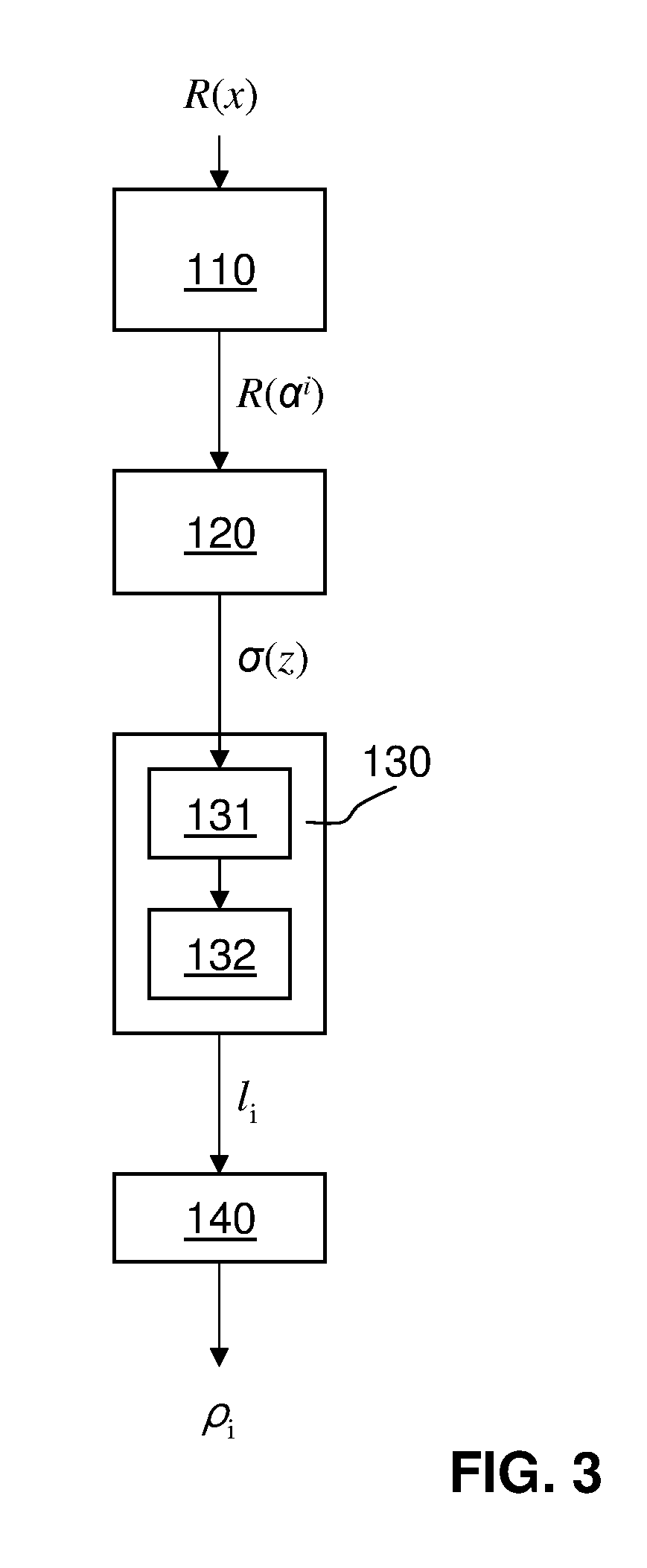Evaluation of polynomials over finite fields and decoding of cyclic codes
a polynomial and finite field technology, applied in the field of efficient evaluation of polynomials over finite fields, can solve the problems of inefficient algorithm, transmission data may become corrupted, and polynomial evaluation over finite fields, and achieve the effect of efficient evaluation of polynomials
- Summary
- Abstract
- Description
- Claims
- Application Information
AI Technical Summary
Benefits of technology
Problems solved by technology
Method used
Image
Examples
example
Test Simulation Programs in MAPLE
[0086]The algorithm has been simulated in MAPLE for test purposes only. The MAPLE programs are given below along with simulation times which show that already in a poor software implementation significant gain can be observed. Implementation in, e.g., the C language, assembler, or hardware implementation will give even better performances.
[0087]To reliably estimate the evaluation time, an external loop is executed for evaluating the same polynomial in a number N=1000 of points. If T is the measured time, then T / N is a good estimation for the time required to evaluate the polynomial in a single point.
[0088]The polynomial has been chosen randomly with an average number of non-zero coefficients approximately close to n / 2. This situation is typical of the polynomials that represents received code words.
Horner's Rule.
[0089]The Horner rule is a simple loop of length n:
> #BCH code (127,85,13) Computation of 3 syndromes 1000 times>gz7 := z{circumflex over ( ...
numerical example
[0145]In the previous sections we presented methods to compute syndromes and error locations in the GPZ decoding scheme of cyclic codes up to their BCH bound, which are asymptotically better than the classical algorithms. The following example illustrates the complete new procedure.
[0146]Consider a binary BCH code [63; 45; 7] with generator polynomial
g(x)=x18+x17+x14+x13+x9+x7+x5+x3+1
whose roots are[0147]α, α2, α4, α8, α16, α32, α3, α6, α12, α24, α48, α33, α5, α10, α20, α40, α17, α34,
thus the BCH bound is 3.
[0148]Let c(x)=g(x)I(x) be a transmitted code word, and the received word be
r(x)=x57+x56+x53+x52+x50+x48+x46+x44+x42+x39+x31+x18+x17+x14+x13+x7+x5+x3+1
where three errors occurred. The 6 syndromes are
{S1=α5+α2+αS2=S12S3=α5+α4+α3+α2+αS4=S14S5=α5+α2+1S6=S32.
[0149]For example, S1 has been computed considering r(x) as a sum of the polynomials
{re1=x56+x52+x50+x48+x46+x44+x42+x18+x14+1ro1=x(x56+x52+x38+x30+x16+x12+x6+x4+x2).
[0150]Each square polynomial splits into two polynomials
{ree1...
PUM
 Login to View More
Login to View More Abstract
Description
Claims
Application Information
 Login to View More
Login to View More - R&D
- Intellectual Property
- Life Sciences
- Materials
- Tech Scout
- Unparalleled Data Quality
- Higher Quality Content
- 60% Fewer Hallucinations
Browse by: Latest US Patents, China's latest patents, Technical Efficacy Thesaurus, Application Domain, Technology Topic, Popular Technical Reports.
© 2025 PatSnap. All rights reserved.Legal|Privacy policy|Modern Slavery Act Transparency Statement|Sitemap|About US| Contact US: help@patsnap.com



